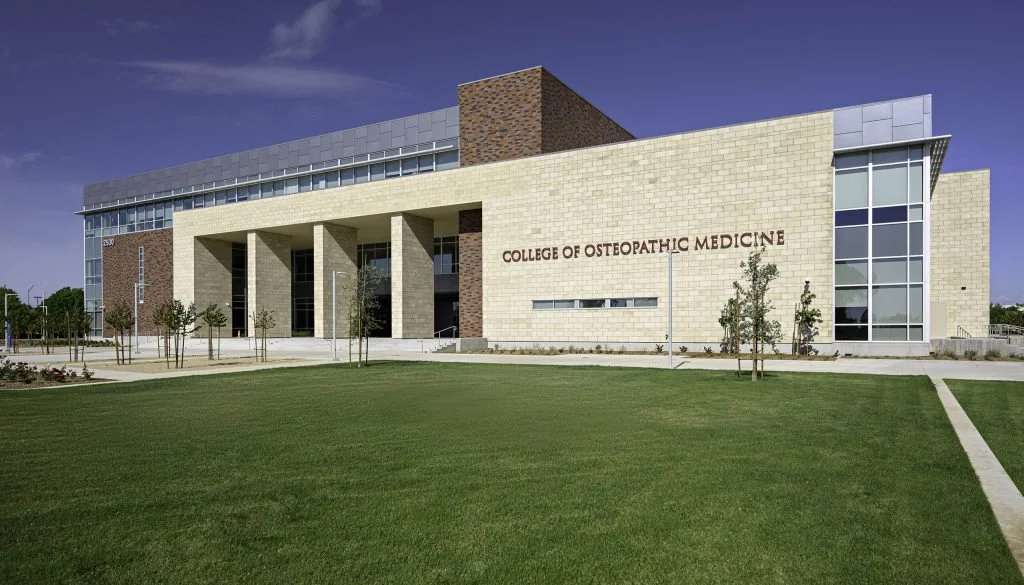Case Study: How CHSU Modernized Anatomy Education with 3D Anatomy Software
California Health Sciences University - College of Osteopathic Medicine – Photo courtesy of CHSU
TL;DR: CHSU College of Osteopathic Medicine modernized anatomy education with HoloAnatomy®, a 3D anatomy software and virtual anatomy lab powered by mixed reality. The program supplements dissection labs with immersive, spatial learning and team-based active learning. Early results show stronger engagement, collaboration, and cost-efficient scalability, positioning CHSU as a model for next-generation anatomy education.
Traditional Dissection Faces Space and Cost Limitations
Medical schools nationwide are under increasing pressure to modernize anatomy education while navigating logistical limitations. California Health Sciences University (CHSU) College of Osteopathic Medicine was no different. Traditional dissection remains foundational, but space and cost limit accessibility.
CHSU Rewires Anatomy Education with a Virtual Anatomy Lab
CHSU has been at the forefront of innovation in medical education. Recognizing the limitations of conventional methods and the potential of emerging technology, CHSU began to explore ways to enhance its anatomy curriculum using immersive tools.
To expand access and engagement, CHSU introduced HoloAnatomy®, a 3D anatomy software and virtual anatomy lab that enables immersive exploration of human anatomy through mixed reality. The goal was to supplement traditional labs with a digital environment that enhances spatial understanding, flexibility, and student collaboration.
Faculty Align MR With Active Learning Strategies
The institution began building anatomy lessons emphasizing 3D spatial relationships – an aspect that even dissection struggles to convey effectively. Faculty also integrated active learning strategies, such as team-based learning (TBL), into mixed-reality sessions to boost collaboration, critical thinking, and retention.
A Third Dimension in Anatomy Education
CHSU’s adoption of HoloAnatomy offered an interactive, scalable alternative to dissection labs. The platform allows students to study detailed 3D models of human anatomy in and out of the classroom.
Mixed-reality sessions followed best practices, structured for comfort, accessibility, and engagement, even for students with glasses or sensitivity to immersive technology.
CHSU Success Points the Way Forward
Initial outcomes have been highly positive. Students reported higher levels of engagement and cognitive challenge, while faculty observed improved collaboration and satisfaction. Supplementing or replacing dissection learning with holographic content has shown to be cost-effective and time-efficient. Early qualitative feedback indicates strong acceptance and enthusiasm among students and educators.
Mixed reality tools like HoloAnatomy offer a powerful, flexible, scalable complement or alternative to traditional anatomy instruction. By combining 3D anatomy software, virtual anatomy lab experiences, and active learning strategies, CHSU is helping redefine how the next generation of physicians learns human anatomy
-
HoloAnatomy was developed in collaboration with leading medical educators to provide color-enhanced, research-based models optimized for learning clarity. Unlike traditional 3D anatomy apps, it uses mixed reality to project life-sized anatomy in shared spaces, enabling true spatial understanding and collaborative exploration.
-
While some schools and programs do use HoloAnatomy without dissection, the solution offers a powerful, scalable complement to dissection labs. Schools like CHSU use it to reinforce dissection-based learning, extend access when space or donor resources are limited, and strengthen 3D spatial comprehension for all students.
-
CHSU faculty report higher student engagement, improved collaboration, and greater instructional efficiency. Students demonstrate stronger understanding of anatomical relationships, while the program benefits from a cost-effective, portable virtual anatomy lab that supports ongoing innovation in medical education.


